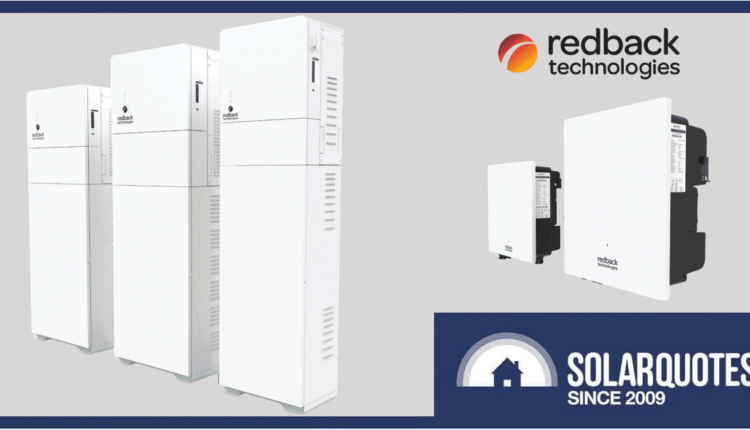Redback Resurgence: New solar inverters and batteries
Queensland-based Redback Technologies launched its new range of solar inverters and batteries at All-Energy Australia in Melbourne today.
Redback Technologies, based in Indooroopilly, was founded in 2015 and its first products hit the market in 2016. The company has faced some challenges over the years; particularly at the start of this year when it went into voluntary administration. The search for a buyer or investor followed and just a few months later the company emerged from voluntary administration with new owners – Australia Ebon Group; a fintech company.
The new products launching at All-Energy Australia are:
I series inverter
The I-Series features single and three-phase grid-tied inverters in various capacities. All are designed for Australian conditions and have an operating temperature range of -25°C to 60°C and an efficiency of 97.3% to 98%.
The inverters feature intelligent load control that can run a large load on excess solar power when it is available and shut it down when it is not available. But if there isn’t enough sunshine during the day, the feature can still turn it on at the end of the day.
A smart meter and WiFi dongle are included with all I-Series inverters, as well as comprehensive monitoring via the Redback portal or MyRedback app. The company offers a 10-year guarantee on the inverters.
Further specifications can be found in the I-Series data sheet here.
H series batteries
Redback’s H-Series batteries are all-in-one solutions offered in AC and DC coupled options for single-phase homes, three-phase homes and high energy demand residential applications.
- Hybrid battery system: Two variants – 9.6 and 19.2 kWh capacity
- Hybrid battery Max: Four variants – 10-25 kWh
- Hybrid battery 3-phase: Four variants – 15–50 kWh
It is not yet clear whether this is nominal or usable capacity. Cell chemistry is not mentioned, but as far as I know Redback only uses lithium iron phosphate (LiFePO4) these days.
As with the new inverters, the maximum operating temperature of the H series is 60°C. The H series single phase housing measures 540 x 363 x 1270mm, while the Max and 3 phase housings are 652 x 380 x 1150mm.
The batteries provide backup power in the event of a power outage and can continue charging with solar energy even if the grid fails.
All have Redback’s intelligent load control feature and monitoring can be done via the Redback portal or the MyRedback app.
The batteries come with a 10-year warranty and are expected to be available by the end of this year. A brochure and data sheets for all of the above products (including inverters) can be downloaded here.
Dr. Commenting on the new range last week, Redback Chief Executive Officer Adrian Knack said the company understands that installers want a simplified installation that is safe for them and those who live or work there.
“We also know that homeowners are looking for ways to reduce their energy bills as the cost of living continues to weigh on Australians’ pockets,” he said. “As we developed our next-generation product line, our goal was clear: to help solve these problems for our customers and bring new, improved and more powerful systems to market.”
If you’re attending All-Energy Australia, taking place at the Melbourne Convention and Exhibition Centre, you can view prototypes of the entire new range today and tomorrow at stand T113 – just outside and behind the front doors. Further details can also be found on the Redback Technologies website.
Redback batteries are now Amber SmartShift compatible
In further company news yesterday, Redback Technologies announced that its products are compatible with Amber Electric’s SmartShift – this includes the new H-Series and all future batteries.
Amber Electric is a retailer that sells electricity at real-time wholesale price with no mark-up on margin – members only pay a subscription fee of $22 per month. Amber’s SmartShift program is aimed at solar battery owners and includes an app that can control a battery to achieve maximum savings when electricity prices fluctuate. It charges a battery when wholesale prices are low or negative and discharges it to the grid when they are high, passing profits on to participants.
An initial four-week beta test with more than 20 Redback customers reportedly went quite smoothly, with “overwhelmingly positive feedback” from participants.
“The quality and attention of the Redback engineering team made this integration one of the most straightforward and high-quality integrations we have ever completed,” said Myles Eftos of Amber.
Jono from SQ is an Amber SmartShift customer (but uses a different brand battery) – you can read his review here.



Comments are closed.